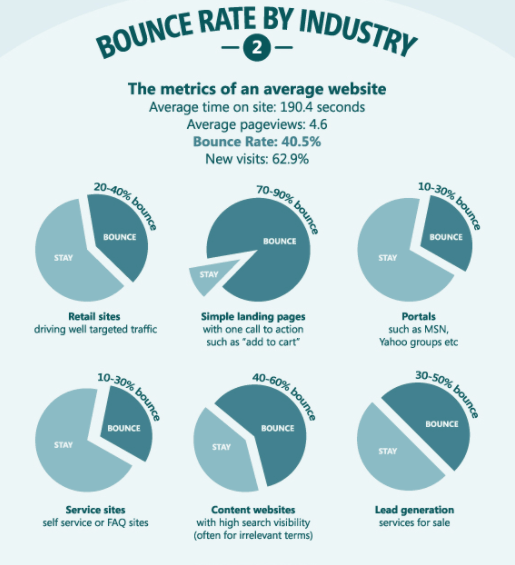To help your clients achieve any level of success with their websites, you need to be able to identify, understand and improve key website engagement metrics.
But what is a "key" website engagement metric?
Although there are lots of website engagement metrics you could track (way more than what we listed in this article), we believe the following are the most important website engagement metrics for both SEO and conversion success.
The good thing is that with Duda, which was created to make website-building more efficient for website developers and designers, you have a hand to help you achieve good outcomes in many of these areas. Our intuitive platform adheres to Google’s best practices and offers website personalization options on a visitor-by-visitor basis.
The key website engagement metrics to track include:
You can track these metrics through your Duda dashboard and/or Google Analytics, as well as Google Search Console.
Key Website Engagement Metrics To Watch
Let's take a more in-depth look at each one of the website engagement metrics mentioned above.
Traffic From Unique Visitors
As Neil Patel said, “Traffic is the lifeblood of your site.” You have to drive people to your client’s site through great content, a smart SEO strategy, paid marketing, etc.
When incorporated as part of a strategy, measuring unique visitors can help you see how many people are coming to a site during a specified period, like monthly, weekly, daily or hourly. It’s a key measure of website traffic.
Oh, and it also influences SEO rankings. Google believes that pages with high traffic are considered authoritative, useful and popular, and ranks them higher in search.
Pageviews
“Pageviews” measures the number of users visiting a particular page. Every time a user opens or refreshes a page, that’s a pageview.
Pageviews are an effective metric to determine visitor trends over time and see which kinds of pages are the most popular with website visitors.
How To Improve Traffic Metrics
PPC campaigns, adding great content to a site, social media engagement, strategic link building, display advertising, email marketing and boosting SEO rankings are just some of the ways to increase traffic to a site. After all, for any engagement, first there has to be traffic.
Once visitors are on the site, you can use the next group of metrics to measure how well the site delivers the right content for conversions. You can also use the following metrics to help determine if advertising is attracting the right visitors.
Bounce Rate
Google defines bounce rate as the percentage of visitors to a site who navigate away from the site after viewing only one page. If the bounce rate is high, it likely means that the corresponding page didn’t deliver on its promise (from an ad, for instance) or expected value.
Various industries have certain expected bounce rates.
Crazy Egg offers the below breakdown:
Bounce rate is a good metric to help determine whether an advertising campaign is drawing the right visitors. If the bounce rate is high on the landing page for a campaign, then maybe the visitors aren’t the right ones to target — or the landing page might need some re-working.
Plus, Google uses this information in search rankings. Pages with high bounce rates typically get dinged on search rankings.
Time on Page
This metric is pretty straight forward. It simply measures the
time a user spends on a page. It can also help inform what a user does on a page. For example, five seconds on a 1,300-word article probably means the user didn’t find the content worth their time; or at least. not at that moment. A short time on page could also indicate it was too hard to navigate or loaded slowly.
Average Session Duration
Average session duration is derived from the total time users spend on the site over a time period (like day, week, month), divided by the total number of sessions over that period.
This metric can help provide information about how long users spend on the site before closing their browser or navigating away.
Average session duration doesn’t have to be long. It only has to be long enough to result in conversions.
Behavior Flow
Google Analytics visualizes how users navigate through a site from various landing pages to the next page they click, to the next page they click, etc. You can see different flows for different visitors, as well as how many visitors continue to another page (and how many don’t). It’s an excellent way to see if the site is moving traffic through the way it was designed and can reveal weak any drop-off points that need to be addressed.
Conversion Rate
In Google Analytics, you can set up certain goals for your customers — like whether users click the CTA on a landing page or download an eBook. It works best to set up multiple goals and then track them.
Conversion rate allows you to see how a specific page is performing. It’s also an excellent metric for measuring A/B test results.
Conversion rate is critical because conversions (whether that is purchasing an item, requesting more information, calling the business, chatting, downloading content in exchange for an email address, etc.) are, ultimately, the entire purpose of the site.
Cart Abandonment Rate
This metric can be set up in Google Search Console as a conversion goal. Other platforms, like Duda’s eCommerce tools, automatically track this and can send a reminder email to site visitors about items left in a shopping cart.
Cart abandonment rate is important because it shows where things break down in an eCommerce flow. Why do customers abandon the cart? Was the price too high in the end? Shipping too expensive? This metric is a good indicator to watch, especially when conducting eCommerce page tests.
Improving Behavior Metrics
The above user behavior metrics can be improved by ensuring that a website is easy to navigate, provides high-value content and a great user experience, has clear calls-to-action, and maintains landing pages that deliver on the promise that drove visitors there.
Another way to improve all of these user behavior metrics is to use website personalization, which means creating an exclusive, one-on-one, customized experience for visitors. Duda’s
website personalization tools make this simple but effective. Personalization rules can be based on time of day, visitor location, number of previous visits to the site, or past purchases. It’s a simple but awesome way to give users a better experience.
Critical SEO Metrics: Pagespeed & Core Web Vitals
Core Web Vitals can now be measured through Google Search Console. Core Web Vitals and Pagespeed measure whether a site provides a good user experience by using certain metrics Google determines critical to user experience. These metrics are believed to become more important to Google rankings in the near future, so it is wise to align websites with these best practices before the search giant begins making algorithmic decisions.
These metrics are all related to on-page SEO/UX and require that the site be mobile-friendliness and load quickly.
Putting It all To work for Your customers
When it comes to website success, all of these website engagement metrics matter. Be sure to understand how they work together to inform what’s working for your clients and what’s not.







